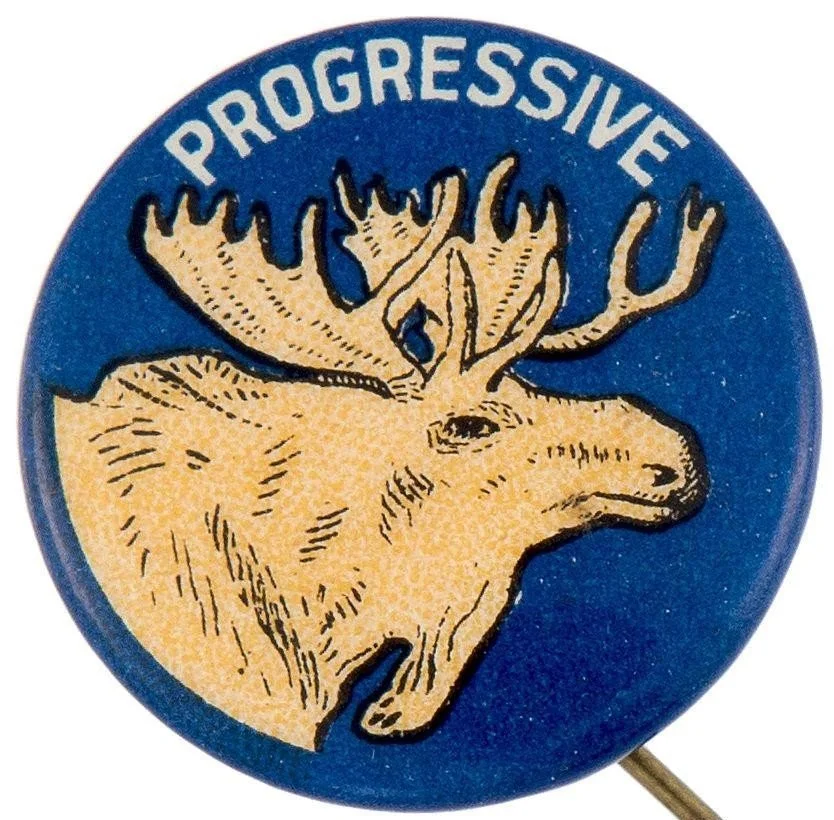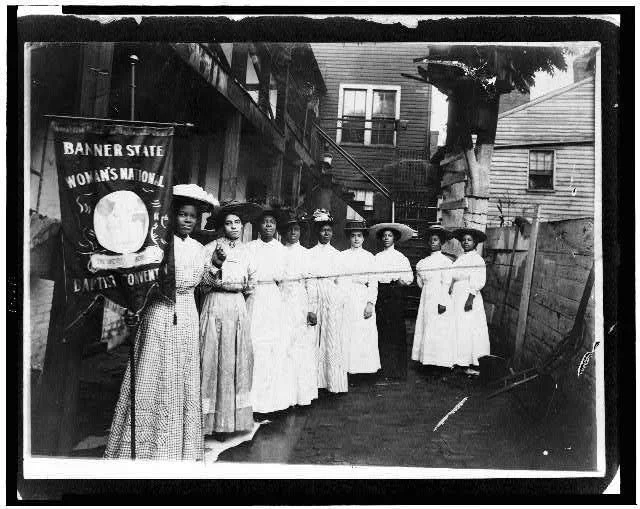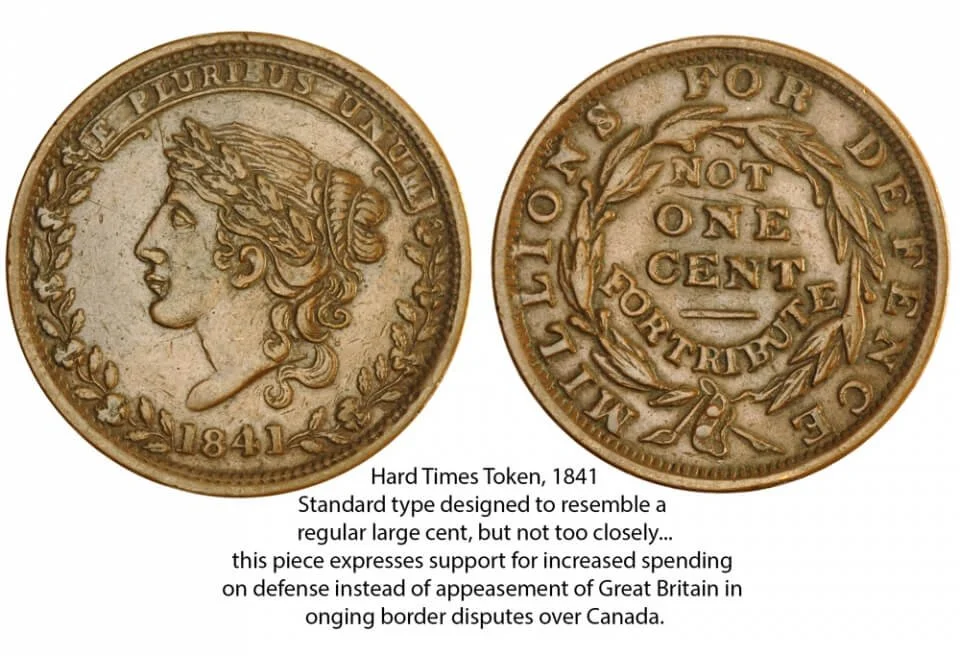
Teaching + Learning Resource
Anxiety and Progress
Change—be it positive or negative—challenges people. Creating the Lincoln penny came from an anxiety about American money’s appearance vs. European coinage, as well as from the admirable desire to recognize the 100th anniversary of Lincoln’s birth. These alternating reasons for change—anxiety and recognition— stamp themselves upon America in the 19-teens and 1920s.
How can a radical, troubled past be harnessed for a better future?
Analysis, Insights, Links
-

Analysis
Our focus here is on discussing how a sometimes radical, often troubled past can be harnessed for a better future.
In a context post, we have discussed how Teddy Roosevelt contained competing views of America—some were expansive and visionary, some were narrow and racist.
Roosevelt becomes president because McKinley was shot only one a few months into his term as President. Roosevelt then runs for one more term, after promising that he would not run for a second term, which he regretted. As he travelled Europe, he became increasingly concerned about the path the country was on, and he entered the 1912 Presidential race running for the Progressive Party, aka the Bull Moose Party.
Roosevelt’s anxiety was in part about the health of the country. Under “Links” you will find the platform of the 1912 Progressive Party. If you look at it, you will see reflected Roosevelt’s belief in the importance of protecting American workers and his belief in a classless society.
He worried about the Democrats’ focus on state’s rights, and he believed in what he thought of as a “New Nationalism.”
Most scholars agree that with his presidency, TR created the strong executive branch that we know now. He believed that the federal government could “ensure the welfare of the people.”
In terms of material culture, Roosevelt gave us not only the Lincoln penny, but also the teddy bear (on a hunting trip he saw a baby bear but decided he could not shoot it—that real bear became the model of teddy bears) as well as the National Parks.
-
Insights
Insights offers different focuses and perspectives on the topic, including views from different time periods. Here we focus on the politics and economics of tokens and legitimate currency.
If you pick up a Lincoln penny, you’ll find “E Pluirbus Unum” on its reverse. This was added for the first time on the 1909 Lincoln cent—but its origins stem from illegitimate, satirical currency, known as Hard Times Tokens. The tokens used the iconography/heraldry of legitimate coins, but they attacked the governement. Take a look, below, at some examples of these coins. Then consider the interesting choice to add E Pluribus Unum to the Lincoln penny, especrally as the Hard Times tokes spoke to a massive depression in the country. Yet for a penny emblazoned with the image of Lincoln, he did indeed stress the unity of the many. The satirical replacement of “Liberty” with “e pluribus unum” becomes inverted on the Lincoln penny.
2015 Article on Hard Times Tokens, focusing on their political messages. The image of the 1841 token, above, comes from this article.
The US Mint’s overview of placing presidents, not a personification of Liberty, on US coins.
A 1901 article that focuses on tokens as reasonable ways to adjust for a lack of small coins, which affects the poor the most: “ The dearth of small change creates a want that is pressing and immediate. All suffer alike under it, and the humblest member of society probably feels its force with the greatest intensity; for on the appearance of this evil in England it was, as we shall see, the town paupers for whose relief remedial measures were first devised.” Read from page 12-17 on for a focus on US tokens and their political commentary.
-

Links
A few links that offer further insights into anxiety and progress, focusing on suffrage for white and Black women.
While it’s tempting to believe that votes for women meant votes for all women, there were pragmatic, racist issues that divided the suffragettes from each other. Among some of the key suffragettes, debates were had about the cost of alienating the South by including Black suffragettes.
National Park Service article on Black Women and the fight for voting rights. Focuses on how Black men and white women ignored the unique position of Black women.
Equal Suffrage” was enshrined as an element of the Progressive party’s 1912 election platform.
Interesting article on the 1913 Suffragette Parade in Washington D.C. This searchable article includes enlightening commentary on Alice Paul’s willingness to bar Black suffragettes in order to appeal to Southern suffragettes. Take a close look at footnote 21.
Alice Paul, who orchestrated the 1913 Washington DC Suffragette parade fought with W.E.B. DuBois about racism. This article places DuBois at the center of discussion about racial politics and suffrage and also covers how and why the “white-led suffrage movement disavowed support for Black suffrage.”
Questions
Questions help us cultivate curiosity. Use these questions to begin your own journey thinking about the topics. If you’re a teacher, these questions offer you some starting points for class discussion. All questions are designed to encourage people to make links between the topics and their own beliefs.
Activities
Our suggested activities use cultural artifacts to engage students in thinking through abstract ideas. Each learning resource includes a specific focus and objectives. We encourage you to choose relevant materials for your class from the Insights and Links sections above. Please use the Analysis section and links as background knowledge for your lesson.
K-6
Goal: Explore the idea of progress
Outcomes: Younger students will be able to explain how actions can improve or hinder progress; older students will know more about third parties.
Activities: Growing seeds; research and writing
Time: A few weeks for the seeds, a class period or two and one night of homework or groupwork.
Younger children: This activity focuses on using the growing as seeds as metaphors for encouraging change and progress. Children will grow seeds in an egg carton. Each child should have at least three seeds of the same plant. One seed should be treated mercurially. The other should be watered regularly. The last one should be watered, fertilized, and placed in the best sunlight. The goal here is for students to see that as a plant is treated, so it progresses—or it does not. From the concrete experience of treating the plants differently, ask students to follow-through on the metaphor—where in their lives do they think they can make concrete progress? Answers might be in practicing a sport to get better at it, or practicing an instrument or reading.
Older children: Ask the children to read the 1912 Progressive Party platform—divide the class up so that they each take a section. This will allow you to drop some of the more arcane elements, if you like. Then have the children research current practice on their issue or section. For instance, if they took “equal suffrage,” they could explore the push to lower the voting age. By looking at a platform that is over 100 years old, they can break the idea that newer is necessarily better, and they can see how the roots of some key issues are very old. Have them analyze what has or has not changed. If you want to focus particularly on third parties, have them compare the Democratic and Republican platforms for the same election. Where and how does the Progressive platform differ?
7-12 and Beyond
Goal: Exploring the uneven history of progress
Outcomes: Students will be able to enumerate the power of organization and affinity grouping on politics and political action; students will be able to detail the politics of the suffragette movement.
Activities: Comparison/contrast, analysis, writing
Time: Cursory discussion—about 45 minutes; longer discussion and group project, 2 class sessions and homework.
Create a collection of concrete objects that can be grouped in any number of ways. For instance, you might have a paper bag, some fruit, a pen, a baseball, a phone, a laptop and maybe a belt. Break students into groups and ask them to find as many creative ways to group the items as they can within 12-15 minutes. Ideas might be “things that are round,” “things to take on a picnic,” “things that are man-made,” “containers (the laptop “contains” knowledge; the bag contains anything; the belt “contains” a body” and so on). The goal here is to move beyond expected groupings. Have fun as you put together your grouping project items. Once students have completed the assignment, ask them to take this idea of grouping and apply it to women’s suffrage (or any other topic you like). What are the many ways that women could have grouped themselves? Historically, how did they group themselves? Ask students to consider how some of the actual groupings worked against universal women’s suffrage. For instance, when Alice Paul does not invite Black suffragettes to march in DC in 1913, how has she decided to group suffragettes? What is the consequence of this grouping?
Depending on your class, you could include a discussion of race-based groupings vs. regional groupings vs. economics and/or rights-based groupings, and so on. Have students consider how these different groupings affected the cause of women’s suffrage. If you want to pursue this discussion, break them into teams, each team having a different grouping focus (race, region, economic status and so on) and have them write a proposal for how and why their group should be part of the 1913 Women’s March on DC.
Take a look at the Progressive Party’s 1912 platform:
What would you keep from that platform? What would you add?
If you designed a “Hard Times token” for today, what images or phrases would you include—and why?
TR professed belief in a classless society—do you think that’s possible, and, if so, how would we go about creating it?

